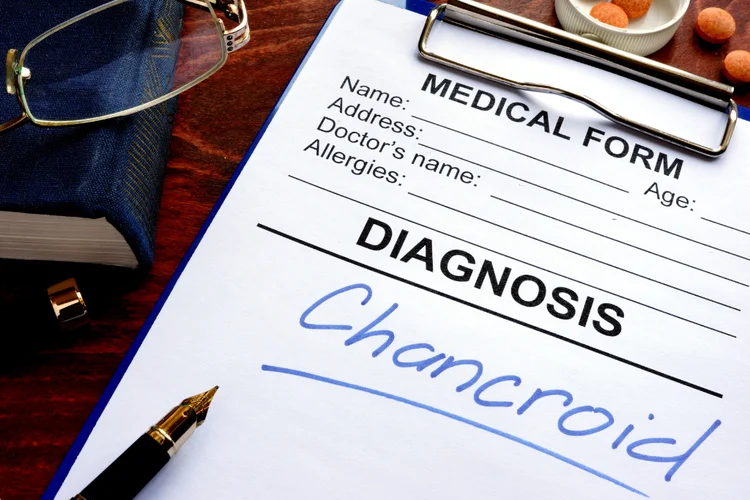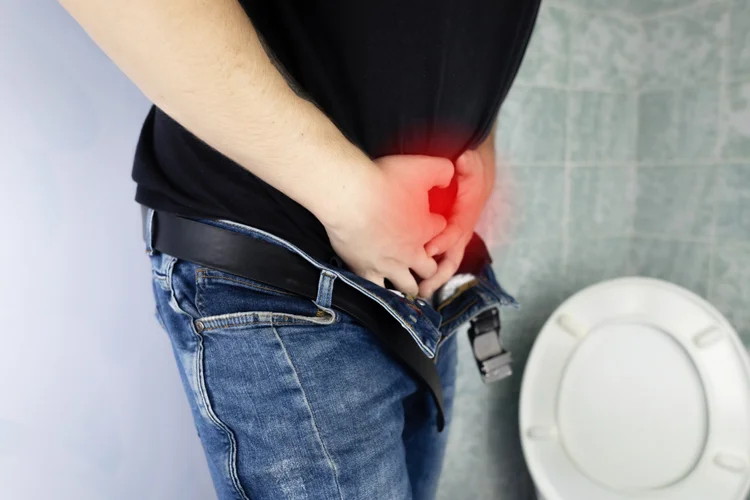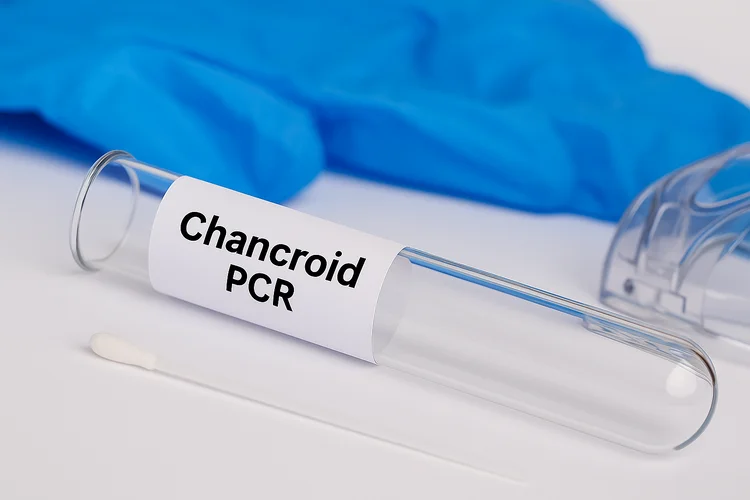Chancroid: Symptoms, Causes, Testing & Treatment
Last updated: Nov 18, 2025
| Test Options | STD Screening Packages |
| Treatment | Oral antibiotics |
| Price |
|
| Appointment Options |
Same-day appointment (subject to availability). Book via WhatsApp: 8877 0326 or email: hi@atamed.sg |
| Clinic Locations |
Orchard: 1 Orchard Blvd
#05-09 Camden Medical Centre, S248649 Tanjong Pagar: 72 Anson Rd #01-02 Anson House, S079911 |
What Is Chancroid?
Chancroid is a bacterial sexually transmitted infection
(STI) that causes painful genital ulcers and swelling of the lymph nodes in the
groin.
It is caused by the bacterium Haemophilus
ducreyi and is more common in regions with limited access to healthcare and
sexually transmitted infections (STIs).
The infection can have a significant impact on sexual and reproductive health by increasing
susceptibility to other infections, including HIV, and by causing considerable distress due
to pain and potential complications if left untreated.

What Causes Chancroid?
Chancroid is caused by the bacterium Haemophilus ducreyi, which enters the skin through tiny breaks during sexual contact. It is primarily spread through direct skin-to-skin contact during:
- Vaginal sex
- Anal sex
- Oral sex
Unlike some other STIs, chancroid is not spread through non-sexual contact such as sharing toilets,
towels or clothing, or casual physical contact.
Several factors may increase your risk of acquiring chancroid, including:
- Having unprotected sex.
- Engaging with multiple sexual partners.
- Travelling to or having sexual contact in regions where chancroid is more common, such as parts of Africa, Asia, and the Caribbean.
Chancroid Symptoms
Chancroid symptoms typically begin within
4 to 10 days after exposure, starting with the appearance of one or
more painful genital ulcers (soft chancre).
The ulcers usually begin as small, red bumps that quickly develop into soft, painful sores
with ragged edges and a grey or yellowish base.
Other common symptoms include:
- Pain during urination or sexual activity, due to the location of the ulcers.
- Swelling and tenderness of the inguinal lymph nodes (groin area).
- In some cases, the swollen lymph nodes may become inflamed and form tender lumps known as buboes, which can rupture and discharge pus.

Men and women may experience different presentations. In men, ulcers are more readily noticeable on the external genitalia. In women, sores can be less visible as they may be located inside the vaginal or anal areas, making them harder to detect.
Can Chancroid Cause Complications?
If left untreated, chancroid can lead to complications such as persistent genital ulcers, scarring, and the formation
of draining abscesses in the groin. These deeper infections may result from unresolved
buboes and can cause significant tissue damage if not managed promptly.
The presence of open sores may also increase the risk of acquiring or transmitting other STIs,
including HIV. In rare cases, untreated chancroid may result in long-term damage to the surrounding
genital tissues.
How Is Chancroid Diagnosed?
Chancroid is diagnosed through clinical examination and laboratory testing
to confirm the presence of Haemophilus ducreyi.
This typically includes:
- Physical examination and medical history review to assess the appearance of the ulcer.
- Swab of the ulcer, which may be tested using a culture (if available) or polymerase chain reaction (PCR) to detect bacterial DNA.
- Blood tests to exclude other STIs such as syphilis or HIV.
Because chancroid can look similar to other STIs that cause genital sores, such as syphilis or genital herpes, additional tests are often needed to rule out these conditions.

Chancroid Treatment
Chancroid is a curable bacterial STI
that is usually treated with a course of antibiotics targeting Haemophilus
ducreyi. These help eliminate the infection, promote healing of the ulcers, and reduce the
risk of transmission to others.
Commonly prescribed antibiotics include:
Most individuals begin to see improvement in ulcer healing within 1 to 2 weeks of starting
antibiotic treatment.
In some cases, swollen lymph nodes may develop into abscesses. When this occurs, additional
procedures such as needle aspiration or incision and drainage may be required to relieve discomfort
and support recovery.
Chancroid Testing & Treatment Cost
At ATA Medical, we provide discreet and confidential testing for chancroid infections and other STIs, along with treatment when required. Prices are as follows:
| Test / Treatment | Test Type | Price* |
|---|---|---|
| Consultation | From $49.05 | |
|
Genital Ulcer PCR Testing (7 tests) Herpes Simplex Virus 1 and 2, Haemophilus Ducreyi (Chancroid), Cytomegalovirus, Lymphogranuloma, Venereum, Treponema Pallidum (Syphilis), Varicella Zoster Virus |
Swab | $318 |
|
Enhanced Genital Ulcer Testing (18 tests) HIV, Syphilis (swab + blood test), Hepatitis B, Hepatitis C, Chlamydia, Gonorrhoea, Mycoplasma genitalium, Mycoplasma hominis, Trichomonas, Ureaplasma parvum, Ureaplasma urealyticum, Herpes Simplex Virus 1 and 2, Haemophilus Ducreyi (Chancroid), Cytomegalovirus, Lymphogranuloma, Venereum, Treponema Pallidum (Syphilis), Varicella Zoster Virus |
Blood + Swab | $538 |
| Oral Antibiotics | From $1.09 per tab | |
We also offer comprehensive
screening packages for multiple STIs and other sexual health concerns. Male and female
doctors are available upon request.
Contact us for more information or to
schedule an appointment.
How Can You Prevent Chancroid?
You can reduce your risk of chancroid by practising safer sex and maintaining regular STI screening.
Key preventive steps
include:
- Using condoms consistently and correctly.
- Limiting the number of sexual partners.
- Avoiding sexual contact with individuals who have visible genital ulcers.
- Seeking prompt medical evaluation for any symptoms suggestive of an STI.
How Do I Book a Chancroid Testing Appointment?
ATA Medical @ Orchard
Nearest MRT: Orchard Boulevard Station (TE13)
Contact Number: 6223 0682
Email: camden@atamed.sg
Opening Hours:
Mon - Fri: 8:30 AM to 12:30 PM, 1:30 PM to 5:30 PM
Sat: 8:30 AM to 12:30 PM
Sun & PH: Closed
ATA Medical @ Tanjong Pagar
Nearest MRT: Tanjong Pagar Station (EW15)
Contact Number: 6223 0682
Email: hi@atamed.sg
Opening Hours:
Mon - Fri: 8:30 AM to 12:30 PM, 1:30 PM to 5:30 PM
Sat: 8:30 AM to 12:30 PM
Sun & PH: Closed


